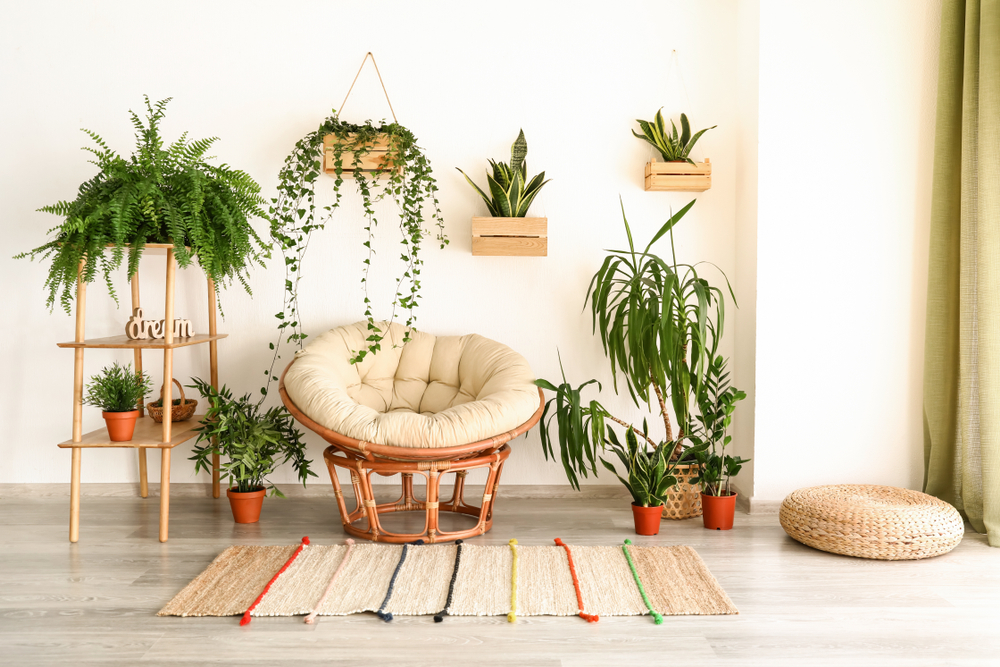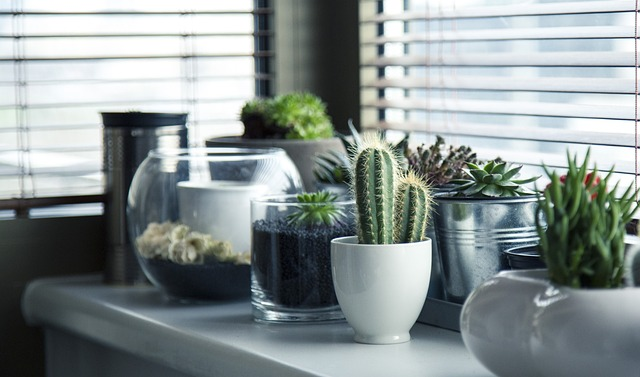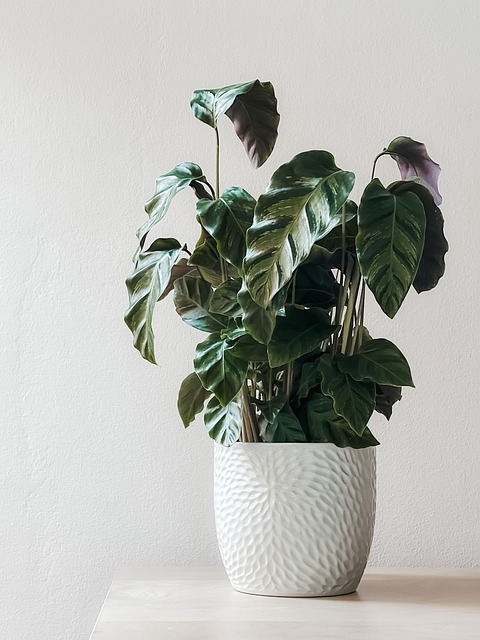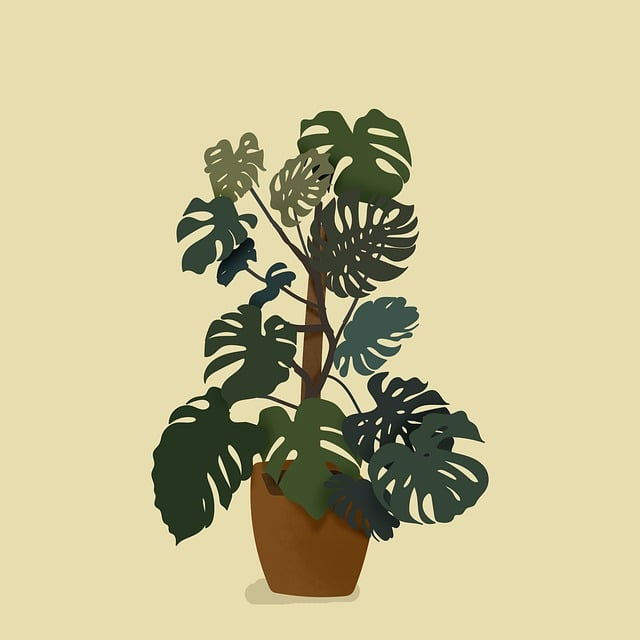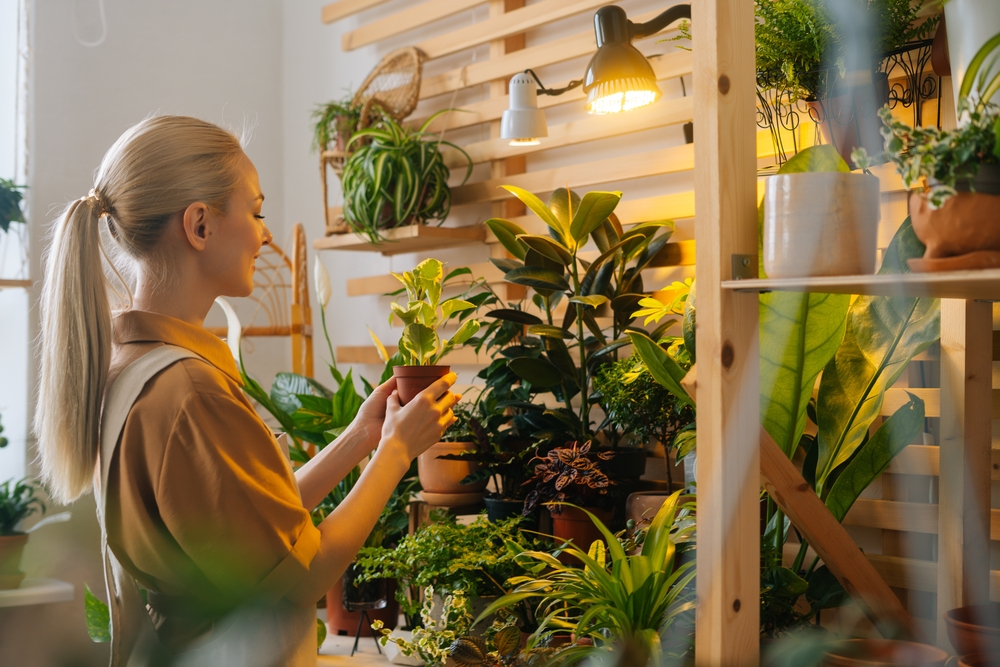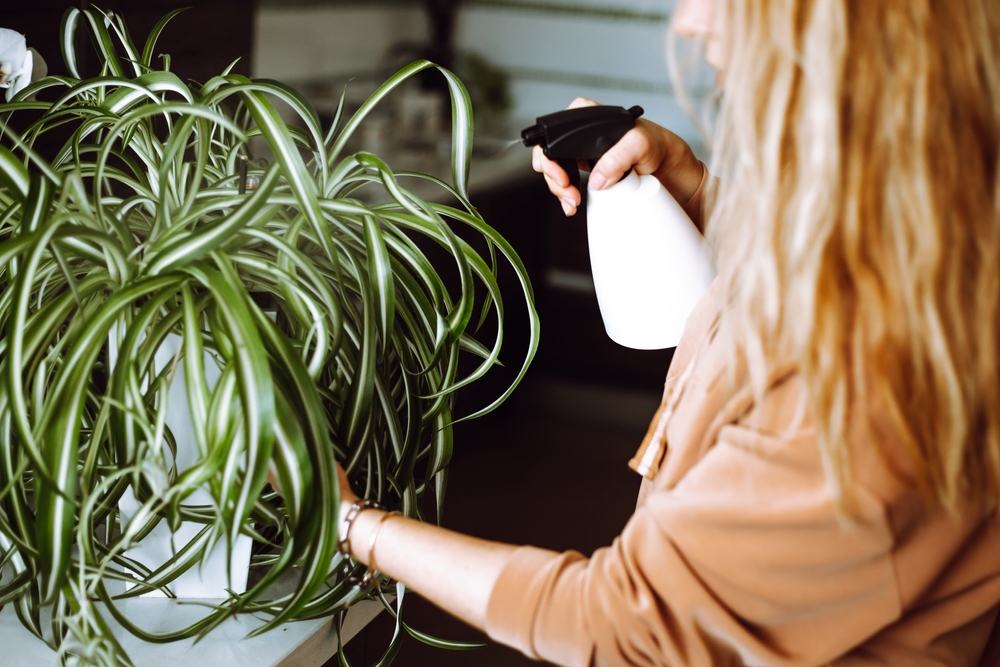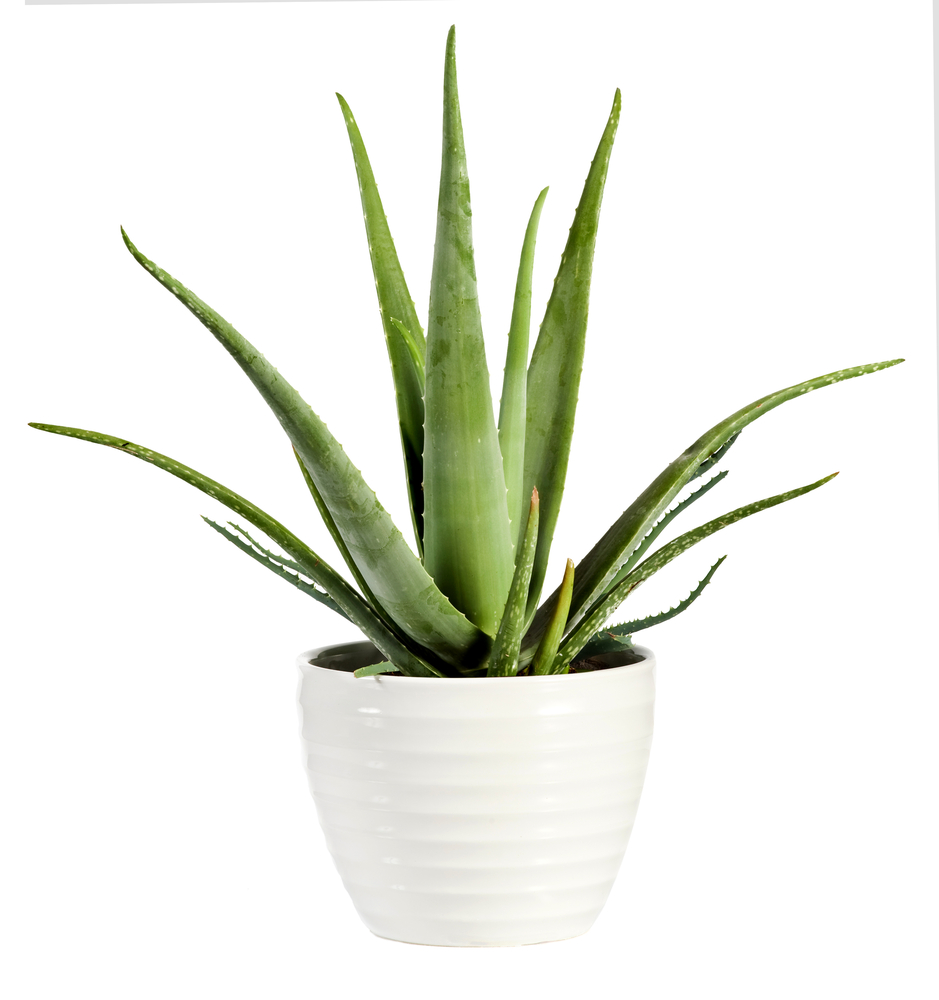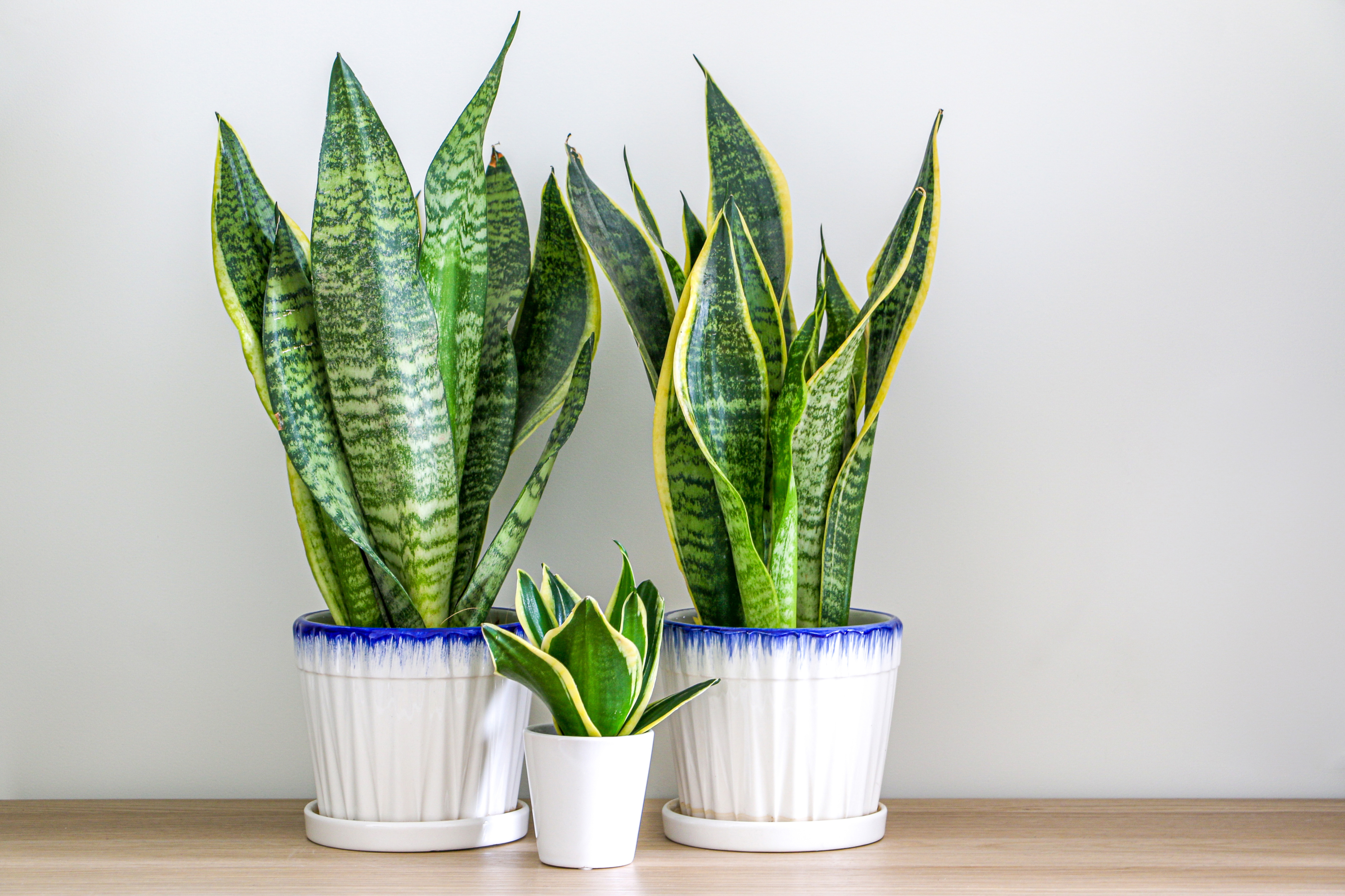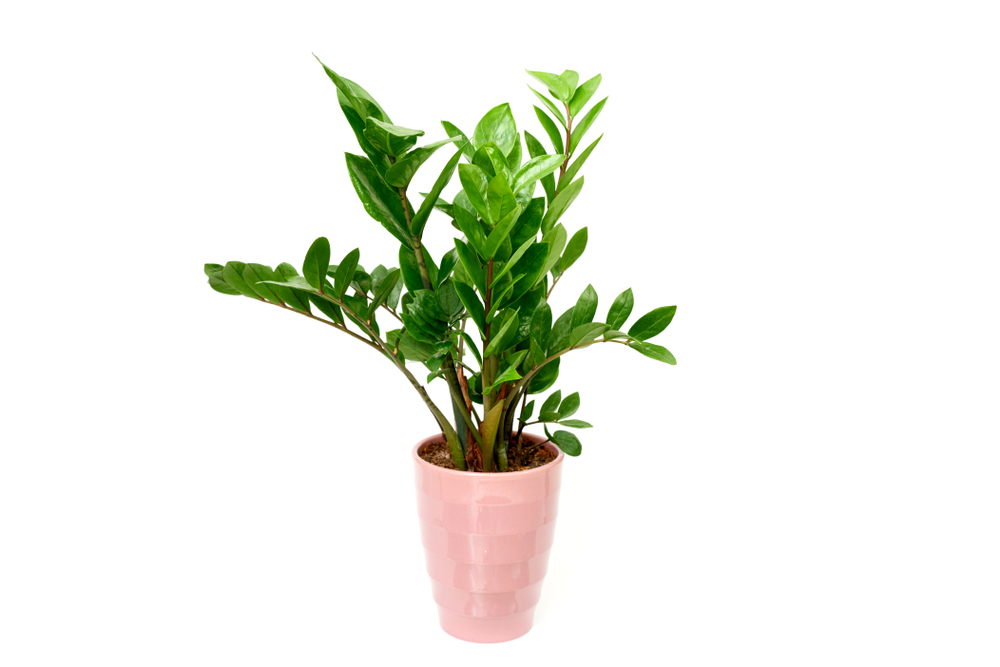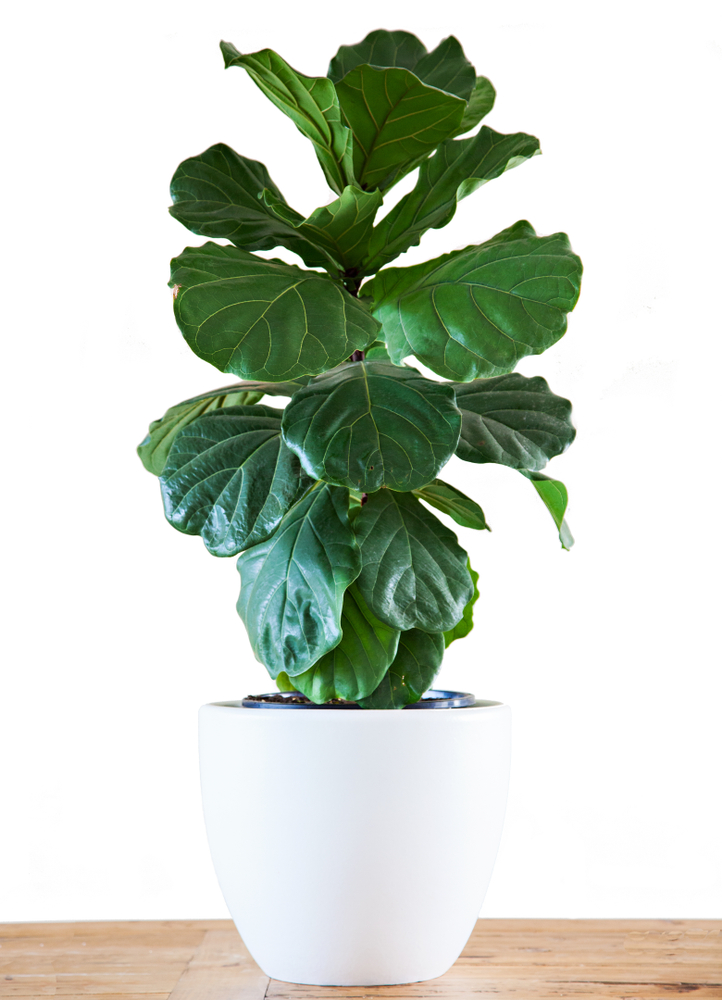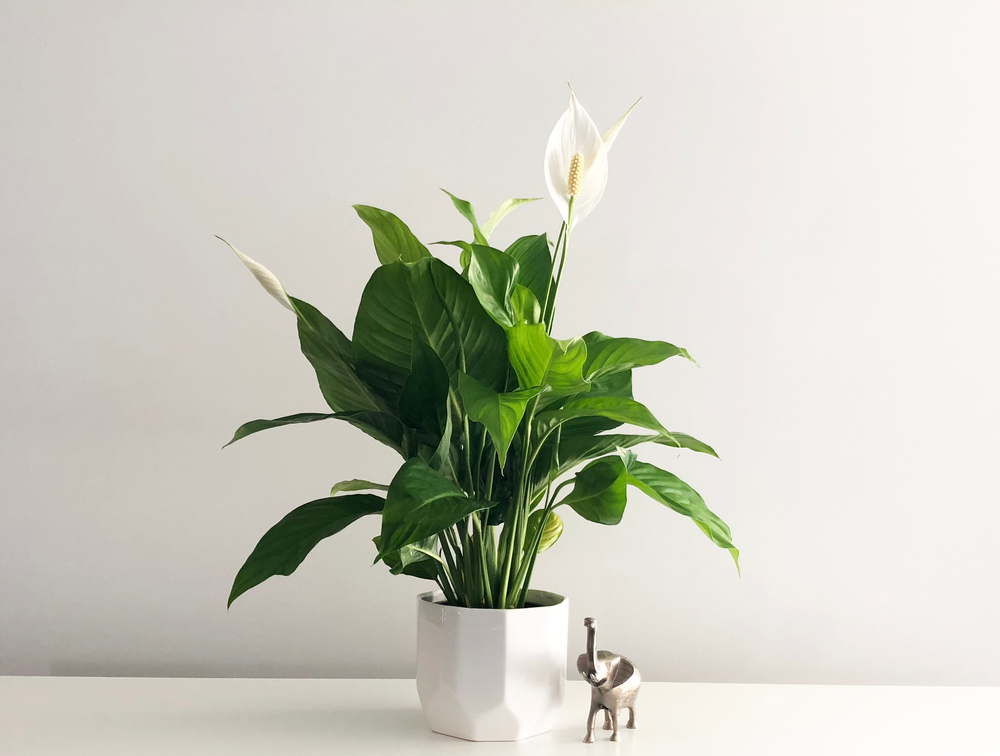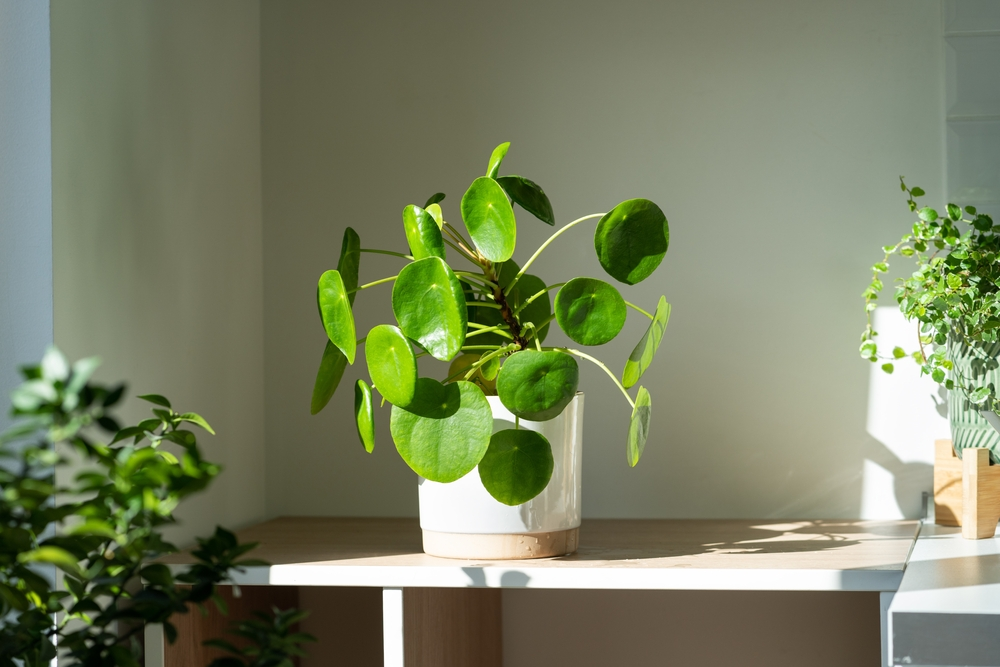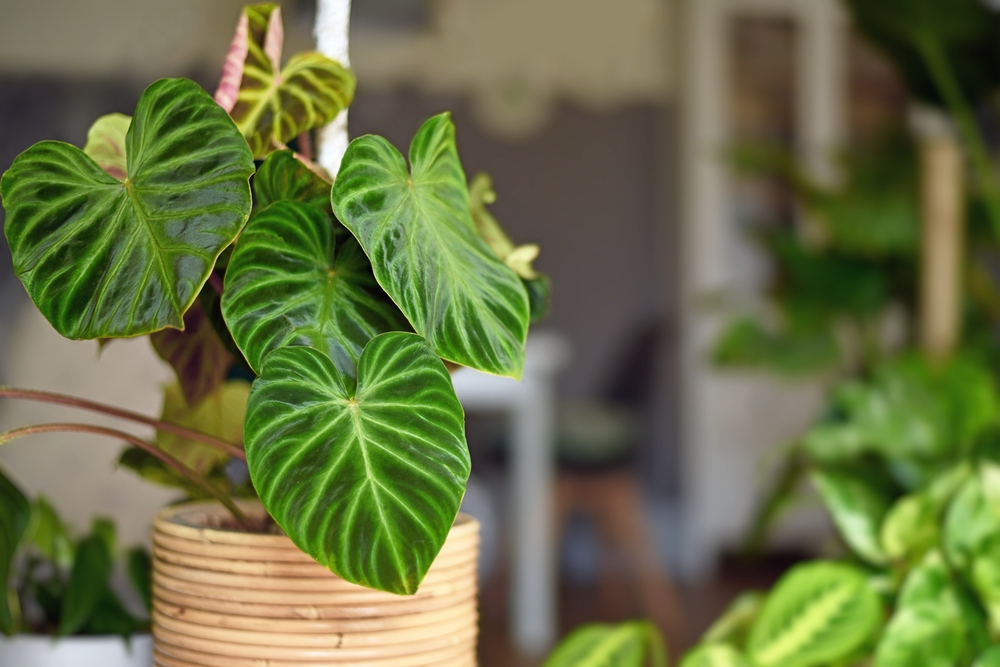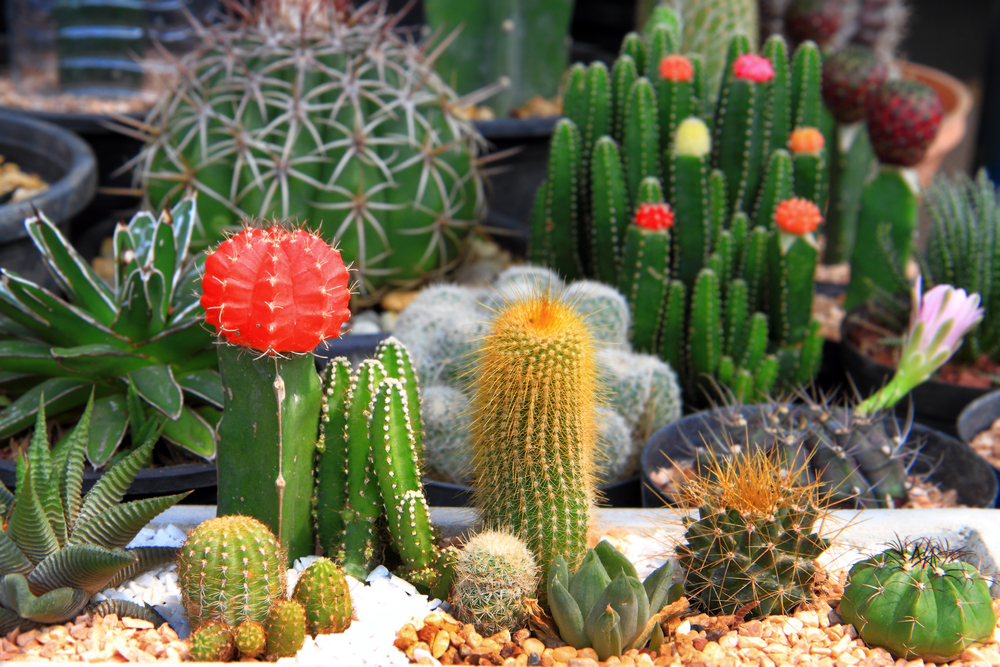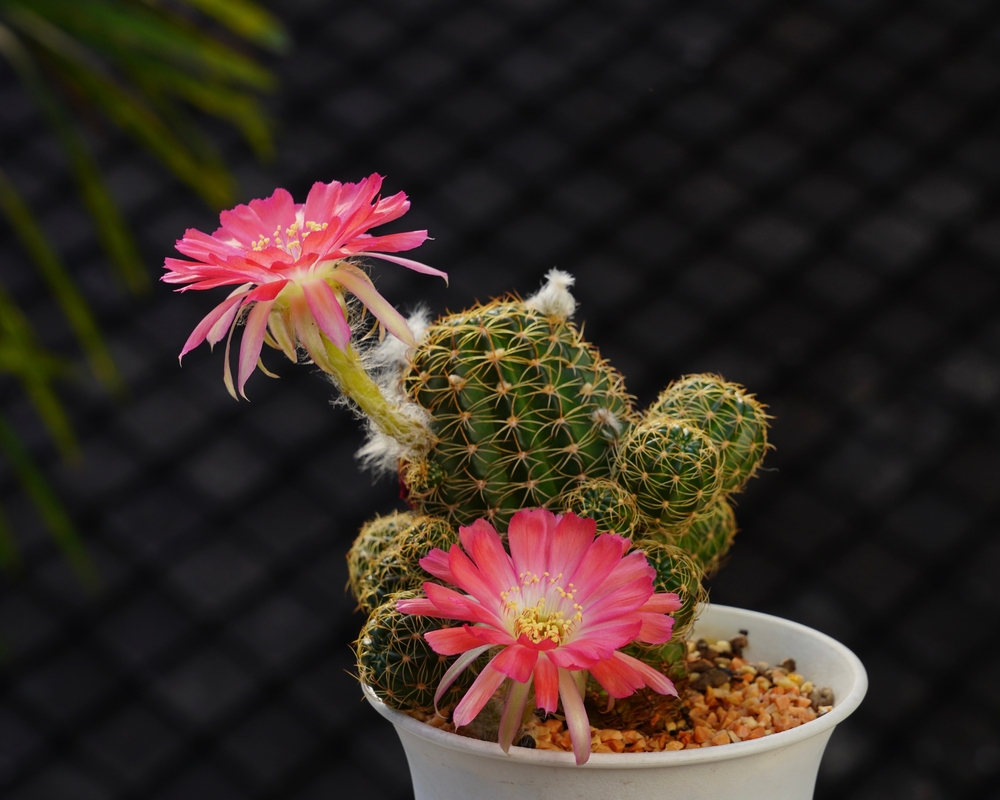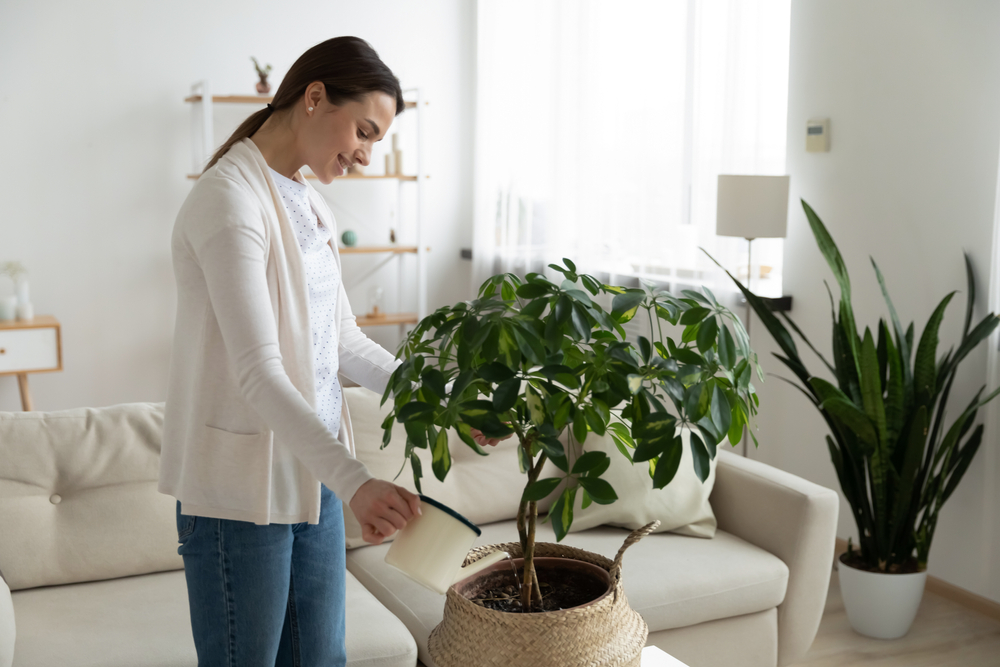HousePlantJoy is supported by our audience. When you purchase through one of our links, we may earn a small affiliate commission. As an Amazon Associate I earn from qualifying purchases. Your cost is not affected.
==================
Are you looking to transform your home into a lush and inviting botanical haven? Well, you’re in for a treat! Houseplants are the secret weapon to breathe life, color, and vitality into your living space. They’re more than just decorations; they’re living companions offering myriad benefits, from enhancing air quality to reducing stress and anxiety. Whether you’re a seasoned plant enthusiast or a complete beginner, the world of houseplants has something for everyone.
This comprehensive guide will take you through the most popular houseplants, highlighting their unique qualities and care requirements. So, if you’re ready to embark on a green adventure that beautifies your home and enriches your well-being, read on!
The Most Popular Houseplants: Transform Your Home into a Botanical Haven
I love having houseplants in my home. They make me feel more connected to nature and happier in my living space. Houseplants make a home more welcoming. But you don’t need to have exotic plants. Start with some popular houseplants and watch your home become a green retreat.
Most Popular Indoor Plants
Welcome to a journey of exploring the most popular houseplants that have the power to transform your living space into a botanical haven. As an avid gardener and houseplant enthusiast, I’ve spent years learning, observing, and nurturing various species of houseplants. Each plant brings its unique charm and aura to the table, adding a touch of green and fresh air to my surroundings.
Houseplants have been a part of our lives for centuries, silently witnessing the unfolding of human history. They have served as symbols of wealth, status, and knowledge. But beyond their aesthetic appeal, houseplants have many benefits that contribute to our well-being.
This blog post is a comprehensive guide that covers everything you need to know about common houseplants, from their benefits to their care and where to buy them. So, get ready to embark on an enlightening and inspiring journey to transform your home with the charm of nature.
The Benefits of Having Houseplants
Having houseplants is about more than just improving the aesthetic appeal of your home. It’s about creating an environment that promotes good health, induces relaxation, and enhances focus. Studies have shown that the presence of plants improves concentration and productivity by up to 15%, reduces stress levels, and boosts your mood.
Houseplants act as natural air purifiers, removing toxins from the air by absorbing harmful gases through their leaves and roots. They release oxygen and produce humidity, enhancing the air quality in our homes.
Moreover, tending to plants is a therapeutic activity that helps to reduce anxiety and promote a sense of peace and satisfaction. Nurturing a living organism provides a sense of responsibility and accomplishment, which can significantly improve mental health.
The Most Popular Houseplants
The world of houseplants is diverse and fascinating, with each plant having unique characteristics and care needs. Some of the most popular houseplants include Aloe Vera, Snake Plant, Monstera Deliciosa, Spider Plant, Pothos, ZZ Plant, Fiddle-leaf Fig, Peace Lily, Chinese Money Plant, Philodendron, and an array of Succulents and Cacti.
These plants are loved for their aesthetic appeal, ease of care, and the benefits they offer. They come in different shapes, sizes, and colors, each adding a unique touch to your home decor.
Whether you are a beginner or an expert, these popular houseplants are perfect for adding vibrancy and life to your living space.
Common Houseplants for Beginners
If you are new to the houseplants world, starting with plants that are easy to care for is essential. Some of the best plants for beginners include the Snake Plant, Spider Plant, Pothos, and ZZ Plant.
These plants are not only attractive but also incredibly hardy and forgiving. They can tolerate a wide range of conditions and can survive even if you forget to water them for a few days.
As a beginner, it’s essential to learn the basics of plant care, such as watering, lighting, and feeding. These plants are a perfect starting point for your journey into the world of houseplants.
Favorite Indoor Plants for Home Decor
When it comes to home decor, houseplants play a pivotal role in enhancing the aesthetic appeal of your space. Plants like Monstera Deliciosa, Fiddle-leaf Fig, Peace Lily, and Philodendron are some of the favorite indoor plants often used for home decor.
These plants have large, lush leaves that add a sense of luxury and depth to your interiors. They can be used as standalone pieces or combined with other plants for a layered effect.
Each of these plants brings its charm to the table, transforming your living space into a green oasis that is visually appealing, relaxing, and inviting.
Detailed Overview of Specific Houseplants
Each of the most popular houseplants has unique characteristics, care requirements, and benefits. In the following sections, we’ll delve into the specifics of each plant, providing you with an in-depth understanding of their needs and how to care for them.
Aloe Vera
Aloe Vera, known for its medicinal properties, is a versatile plant that is easy to care for. It prefers bright, indirect sunlight and needs to be watered only when the soil is arid.
Consider These Three Facts About the Aloe Vera Houseplant:
- Aloe vera is the only edible form of aloe, and it has been used for medicinal purposes for thousands of years. It can help with skin issues, digestive problems, immune system, and wound healing.
- The Aloe vera is a succulent plant that can grow in hot and dry climates and reach a height of 30 inches with up to 21 leaves. It has thick, fleshy leaves containing clear gel and yellow latex.
- Aloe vera can produce tubular yellow, pink, orange, or red flowers. However, it can take years for the plant to bloom and only mature plants at least four years old will flower.
Snake Plant
The Snake Plant is resilient and can survive in low light conditions and irregular watering. It’s known for its air-purifying properties, making it a great addition to your bedroom or office.
Consider These Three Facts About the Snake Plant:
- The snake plant is a succulent plant that belongs to the Sansevieria family. It has thick, sword-shaped leaves that can grow up to 4 feet tall. It has different color variations, such as green, yellow, or silver.
- Snake plants are native to tropical regions of Africa, Asia, and Madagascar. They have cultural and symbolic meanings in different parts of the world. For example, it is considered a symbol of good luck and fertility in Africa, heroism and fortune in China, and good feng shui in the bedroom.
- The snake plant is one of the few plants that can convert carbon dioxide into oxygen at night. It can also filter out harmful pollutants and toxins from the air, such as formaldehyde, benzene, and xylene. It can help improve the air quality and reduce stress and anxiety.
Monstera Deliciosa
Monstera Deliciosa, also known as the Swiss Cheese Plant, is a tropical plant that loves bright, indirect light. It requires regular watering, but please let the soil dry out between waterings.
Consider These Three Facts About the Monstera Deliciosa Plant:
- Monstera Deliciosa is a tropical plant from the Araceae family and native to Central America. It is also known as the split-leaf philodendron, Swiss cheese plant, or Mexican breadfruit.
- The Monstera Deliciosa plant has large, glossy, heart-shaped leaves that can grow up to 90 centimeters (35.4 inches) in length and width. The leaves have natural holes and slits that increase as the plant matures, giving it a distinctive appearance.
- Monstera Deliciosa produces a sweet, scaly fruit that is edible when fully ripe. The fruit tastes like a combination of pineapple and mango and is also known as the fruit salad plant24. However, the fruit can take up to a year to ripen and can cause irritation if eaten unripe
Spider Plant
The Spider Plant is a hardy plant that can thrive in various conditions. It prefers bright to medium light and likes to be kept evenly moist.
Consider These Three Facts About the Spider Plant:
- The spider plant is a common houseplant that belongs to the asparagus family (Asparagaceae). It is native to tropical and subtropical regions of Africa, Asia, and Australia.
- The spider plant has long, slender leaves that can be green, striped, and white. It produces small, white flowers on long stems, followed by tiny plantlets that can be rooted to make new plants.
- The spider plant can improve air quality by filtering out harmful pollutants and toxins, such as formaldehyde, benzene, and carbon monoxide. It can also increase the humidity and oxygen levels in the room
Pothos
Pothos, also known as Devil’s Ivy, is a vining plant that can thrive in low-light conditions. It’s easy to care for and can tolerate occasional under-watering.
Here Are Three Facts About the Pothos Plant:
- Pothos, a tropical vine, is native to the Solomon Islands in the South Pacific but is commonly grown as a houseplant in many parts of the world. It has pointed, heart-shaped green leaves, sometimes variegated with white, yellow, or pale green striations.
- The Pothos plant can grow up to 70 feet (21 m) outdoors, using aerial roots to climb on trees and other supports4. Indoors, it is usually grown as a hanging plant and can add 12 to 18 inches in length in a month. It can also be propagated easily from cuttings.
- Pothos can improve air quality by filtering out harmful pollutants and toxins, such as formaldehyde, benzene, and carbon monoxide12. However, it is also toxic to pets and humans if ingested, causing irritation and swelling of the mouth and throat
ZZ Plant
The ZZ Plant is a robust plant that can survive in low light conditions and requires minimal watering. It’s an excellent choice for beginners.
Here Are Three Facts About the ZZ Plant:
- The ZZ plant is a low-maintenance, drought-tolerant, and air-purifying houseplant that can grow in various lighting conditions. It has shiny, dark green leaves that are sometimes mistaken for artificial.
- The ZZ plant is native to East Africa, especially Zanzibar and Tanzania, and belongs to the Araceae family. It is also known as Zanzibar gem, eternity plant, or Zamioculcas zamiifolia.
- The ZZ plant is toxic to humans and pets if ingested, causing irritation and swelling of the mouth and throat. It can also cause skin irritation if handled without gloves. However, it is not cancerous, as some rumors have suggested
Fiddle-Leaf Fig
The Fiddle-leaf Fig is a popular houseplant that prefers bright, filtered light. It needs regular watering but prefers to avoid sitting in water.
Three Facts About the Fiddle Leaf Fig Plant:
- The fiddle leaf fig plant is native to western Africa and grows in lowland tropical rainforests. It can grow up to 12–15 m (39–49 ft) tall in its natural habitat, but it is usually kept much smaller as a potted plant.
- Fiddle leaf fig plants get their common name from their large, glossy, dark green leaves that resemble the shape of a fiddle or violin. The leaves can grow up to 30 inches long and have prominent veins.
- The fiddle leaf fig plant can produce flowers and fruits when grown outdoors but not indoors. The flowers are pollinated by tiny wasps that use the fruits to feed their larvae. The fruits are not edible for humans, but they are called Mexican breadfruit because they have a starchy texture
Peace Lily
The Peace Lily is a beautiful plant that prefers medium to low light conditions. It likes to be kept moist but not waterlogged.
Here Are Three Facts About the Peace Lily Plant:
- Peace lily is not a true lily but a member of the Araceae family, which includes elephant ears, anthuriums, caladium, and calla lilies.
- The Peace lily plant symbolizes peace, prosperity, tranquility, solitude, and purification. The white flower produced by this plant is a symbol of the white flag, which is internationally understood as a symbol of truce or ceasefire.
- Peace lily can improve air quality by filtering out harmful pollutants and toxins, such as formaldehyde, benzene, and carbon monoxide. It can also increase the humidity and oxygen levels in the room
Chinese Money Plant
The Chinese Money Plant, with its unique round leaves, prefers bright, indirect light and needs to be watered when the top inch of the soil is dry.
Here Are Three Facts About the Chinese Money Plant:
- The Chinese money plant is also known as the pancake plant, the UFO plant, or the friendship plant because it is easy to propagate and share with friends.
- Chinese money plants are native to southern China, growing in the shade of the Himalayan mountains. It is endangered in its natural habitat but is widely cultivated as an ornamental plant.
- The Chinese money plant has round, coin-shaped leaves attached to long, slender stems. The leaves grow up to 10 cm (4 inches) in diameter and display a beautiful, glossy, dark green color
Philodendron
Philodendrons are easy to care for and can thrive in various light conditions. They prefer to be kept moist but not waterlogged.
The Philodendron plant is a diverse and widespread group of houseplants that belong to the Araceae family.
Here Are Three Facts About the Philodendron Plant:
- The Philodendron plant has two main types: vining and non-climbing. The vining type grows as a climber that attaches itself to a support, such as a tree or a trellis, using its aerial roots. The non-climbing type grows as an upright plant that does not need help but may produce aerial roots from the stem12.
- The Philodendron plant has many varieties that differ in the leaves’ size, shape, color, and texture. Some of the common types are Philodendron brandi, Philodendron brasil, Philodendron hederaceum (heart-leaf philodendron), and Philodendron bipinnatifidum (fiddle-leaf philodendron)34.
- Philodendron plants can produce flowers and fruits, but they are rarely seen in indoor cultivation. The flowers are pollinated by tiny wasps that use the fruits to feed their larvae. The fruits are not edible for humans, but some are called Mexican breadfruit because they have a starchy texture14.
Succulents and Cacti
Succulents and Cacti are hardy plants that need bright light and prefer to be kept on the drier side. They are perfect for those who often need to remember to water their plants.
Here Are Three Facts About Succulents and Cacti:
- Succulents are plants with thick, fleshy tissues that store water, while cacti are a type of succulent with spiny stems and areoles, which are modified buds.
- Succulents and cacti can be found in almost every continent except Antarctica, but most cacti are native to the Americas, while succulents have a wider distribution worldwide.
- Succulents and cacti come in many colors, shapes, and sizes; some can even change color according to the season or the amount of sunlight they receive. They can also produce flowers and fruits that attract pollinators and animals
How to Care for Your Houseplants
Caring for your houseplants involves understanding the needs of each plant and providing the right conditions for them to thrive. This includes providing the right amount of light, watering correctly, feeding them the proper nutrients, and ensuring they are free from pests and diseases.
Bright Light, Indirect Light, Low Light, Direct Sunlight?
Light is one of the most crucial elements for plant growth. Different plants have different light requirements, but most houseplants prefer bright, indirect light. Overwatering is a common cause of plant death, so it’s essential to understand the watering needs of each plant and ensure the soil is well-draining.
Feeding Your Plant Collection
Feeding your plants with suitable food can ensure they get the nutrients they need to grow and flourish. Regularly checking your plants for signs of pests or diseases can help you spot problems early and take appropriate action.
Where to Buy the Most Popular Houseplants
There are many places where you can buy the most popular houseplants. Local nurseries and garden centers usually have a good selection of plants, and staff can advise you on how to care for them.
Online stores are also a great option, offering various plants that can be delivered straight to your door. Find some of your favorite plants at JoyfulEco.com. The plants at Joyful Eco all include FREE shipping.
House Plants Make Your Home Welcoming
Houseplants are a great way to add some greenery and freshness to your home and have many benefits for your well-being and comfort. Houseplants can make a home more welcoming by:
Improving the Air Quality:
Houseplants can filter out harmful pollutants and toxins from the air, such as formaldehyde, benzene, and carbon monoxide. They can also increase the humidity and oxygen levels, which can help prevent dry skin, sore throats, and respiratory problems.
Reducing Stress and Anxiety:
Houseplants can create a calming and relaxing atmosphere, lowering blood pressure, heart rate, and cortisol levels. They can also boost your mood and productivity and enhance your creativity and memory.
Adding Color and Personality:
Houseplants brighten up any space with their vibrant colors and shapes. They also reflect your style and preferences and create a sense of connection and belonging. Choose from various houseplants that suit your taste and needs, such as succulents, ferns, orchids, or herbs.
Houseplants Are More Than Just Decorations.
They become living companions that make your home more inviting and enjoyable. To make your home more welcoming with houseplants, start by choosing some easy-to-care-for plants that match your lighting and watering conditions. You can experiment with different pots, stands, shelves, or hang baskets to display your plants attractively. With some care and creativity, you can transform your home into a cozy and inviting oasis with houseplants.
Transforming Your Home with Houseplants
Houseplants possess the power to transform your home into a botanical haven. Whether you are a beginner or an expert, the world of houseplants is vast and fascinating. Each plant displays its unique charm and benefits, adding life, color, and a breath of fresh air to your surroundings. Some plants are even known for their air-purifying talents.
Remember, the key to successful plant care involves understanding the needs of each plant and providing the right conditions for them to thrive. With patience and maintenance, you create a lush, green oasis that enhances the aesthetic appeal of your home and promotes good health and well-being.
So, why wait? Start your journey into the world of houseplants today and experience the joy and satisfaction of nurturing these green companions.
Frequently Asked Questions
Can houseplants really improve the air quality in my home?
Absolutely! Houseplants are like nature’s air purifiers. They have a remarkable ability to filter out harmful pollutants like formaldehyde, benzene, and carbon monoxide. They not only release oxygen but also increase humidity levels, which can help combat dry skin, sore throats, and even respiratory issues. So, if you want to breathe easier in your indoor oasis, bring in some leafy companions.
I've never had a green thumb. Are there houseplants that are forgiving for beginners?
Absolutely! There’s no need to worry about being a plant whisperer from the start. Many houseplants are incredibly forgiving and perfect for beginners. Consider starting with plants like the Snake Plant, Spider Plant, Pothos, or ZZ Plant. These hardy companions can withstand a little neglect and are known for their resilience, making them ideal choices for novice plant parents.
Do houseplants offer any mental health benefits beyond aesthetics?
Indeed, they do! Houseplants aren’t just about pretty decor; they can have a significant impact on your mental well-being. Studies have shown that the presence of indoor plants can reduce stress levels, boost concentration, and even enhance productivity by up to 15%. Taking care of your green buddies is also a therapeutic activity that promotes a sense of peace and satisfaction, helping to alleviate anxiety and improve your overall mental health. So, go ahead and surround yourself with green goodness for a happier, healthier home.
? Embrace the Green Life: Connect with Houseplant Joy! ?
Hey there, plant enthusiasts! Ready to dive deeper into the world of houseplants and home design? Join us on our social media platforms for an immersive experience like no other.
? Facebook: Get the latest updates, engaging content, and connect with fellow plant lovers at Houseplant Joy on Facebook. Share your own green victories and get inspired by others!
? Instagram: Explore a visual wonderland of plant beauty on Instagram. You’ll find stunning photos, helpful tips, and a community that adores all things green. Don’t forget to tag us in your plant pics!
? Pinterest: Seeking design inspiration? Head over to Houseplant Joy on Pinterest for boards filled with creative home decor ideas and, of course, lush plant arrangements that’ll transform your space.
? Twitter: Stay in the loop with our quick updates and interesting insights at Houseplant Joy on Twitter. Engage in conversations, share your thoughts, and keep your plant knowledge up to date.
And while you’re at it, help us spread the joy even further by promoting our newsletter. It’s your ticket to exclusive content, helpful guides, and a community that’s as passionate about houseplants as you are! ??


